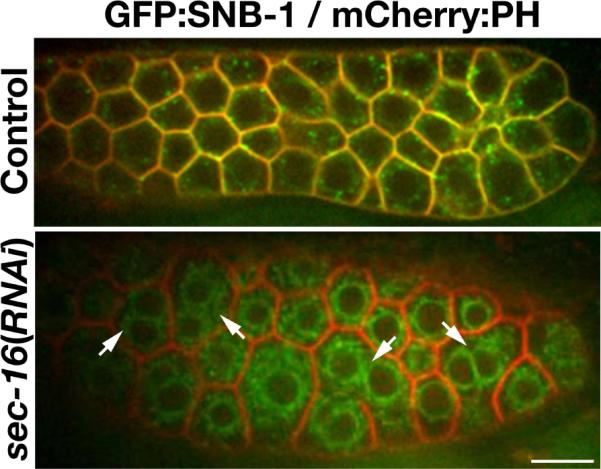Figure 2.

A defect in secretory pathway function results in multinucleation within the distal region of the germline. Swept field confocal optics were used to image a transgenic animal co-expressing a GFP fusion to the v-SNARE SNB-1, a cargo of the secretory pathway, and a mCherry fusion to the PH domain of rat PLC1δ, which localizes to the plasma membrane. In control animals (top), the majority of the v-SNARE localizes to the cell surface, indicating normal function of the secretory system. However, in animals depleted of SEC-16, a critical component of the early secretory pathway, the v-SNARE becomes trapped throughout the ER and fails to co-localize with the PH domain of PLC1δ at the plasma membrane. In many cases, multiple nuclei are observed within an individual membrane compartment (highlighted by arrows), likely resulting from a failure to secrete sufficient membrane to generate partitions following germline mitosis. Scale bar, 10 μm.
